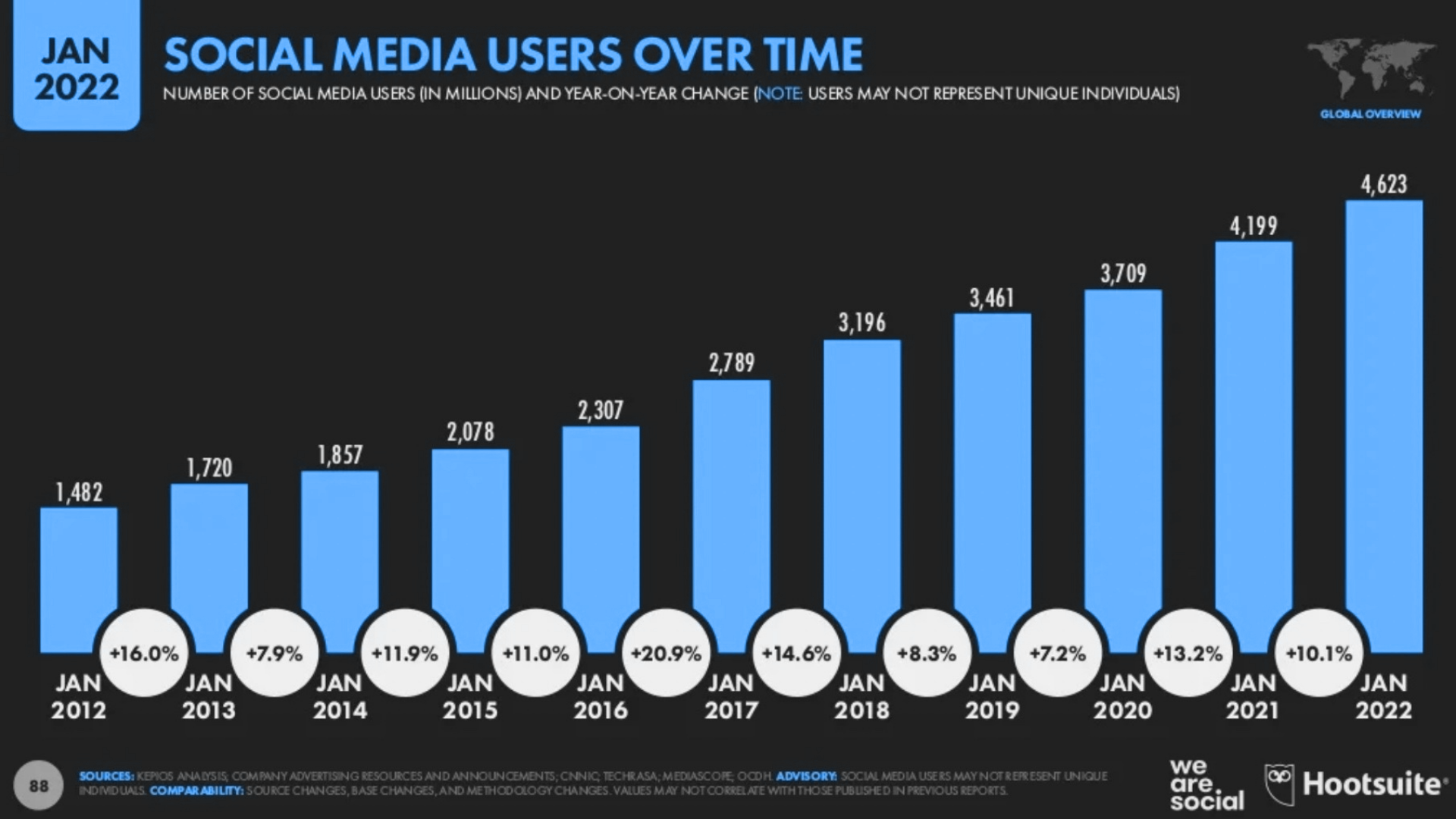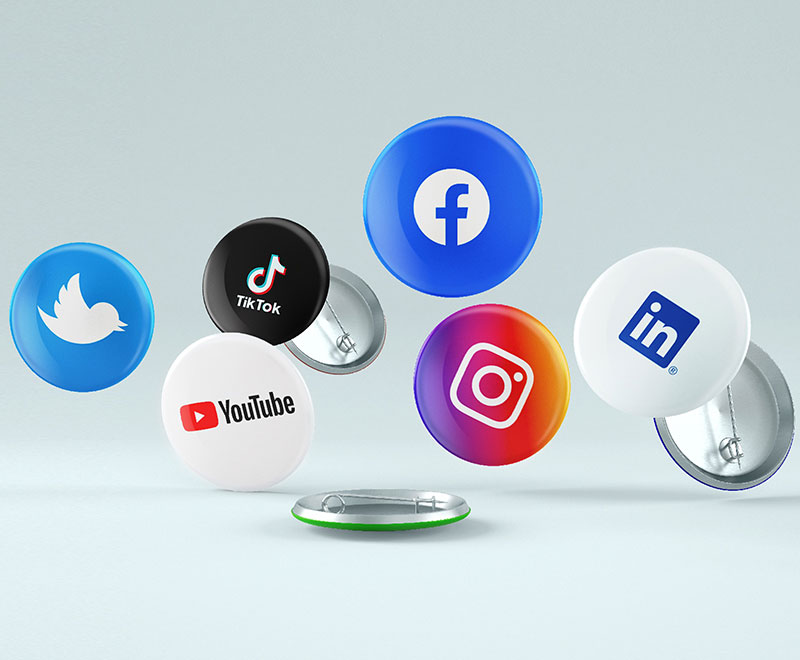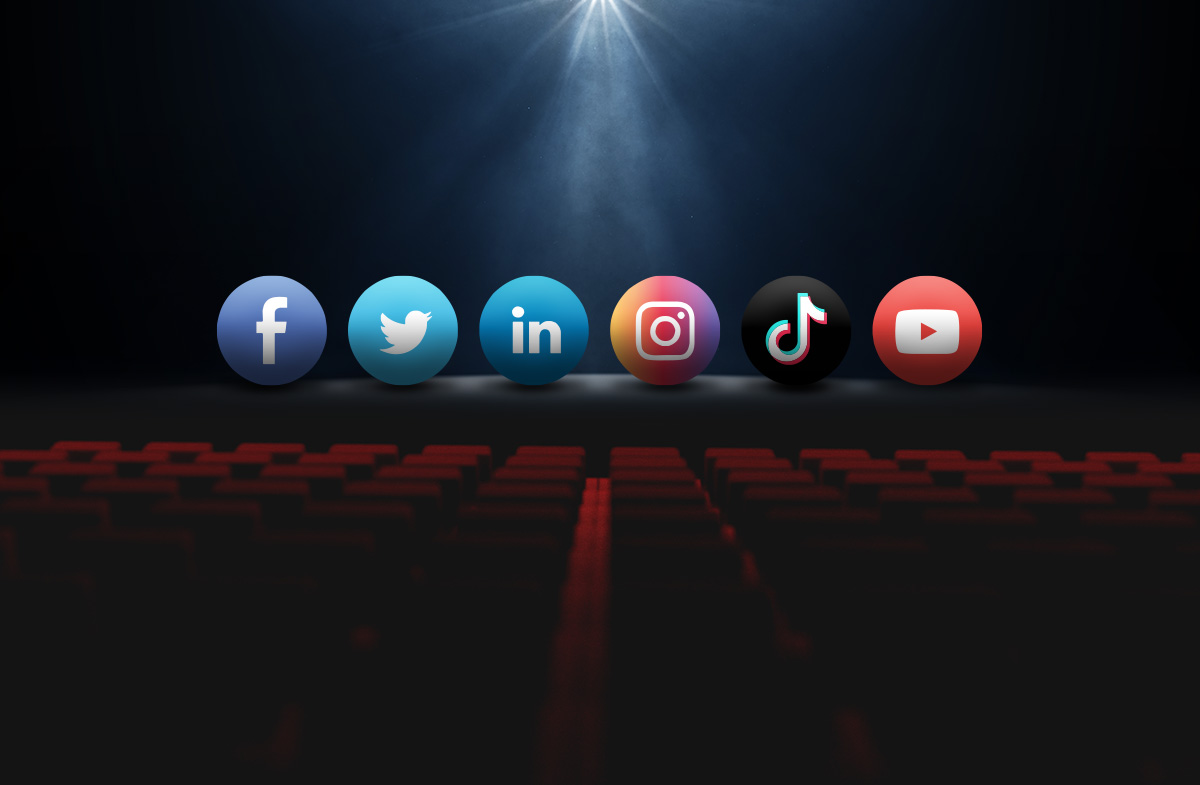What if I told you that you are invited to speak at one of the largest stages in the world where you will have the opportunity to address one of the largest audiences ever to have assembled in the history of mankind?
To be precise, an audience of 4.62 billion people!
That is the kind of opportunity offered to us by social media today.
As of January 2022, there were 4.62 billion social media users globally.1 That is 58.4% of the total population of the world, congregated in one platform.

Incredible Times and an Unprecedented Season
Social media has opened a new set of possibilities for anyone who has a message to share, a service to announce, and something of value to promote. Social media offers an unprecedented, direct, two-way communication option with the audience that Paul, Peter, and John would have given anything to have access to.
Think about it.
The New Testament heroes (who had the same message and the same assignment that you and I have today, as communicators of the good news) had to travel for days, covering miles, undertaking dangerous, time-consuming, back-breaking journeys on galloping horses, creaking wooden carts, and wave tossed ships, only to reach a small group of people in a limited geographical space.
But today, you and I can sit in our living rooms, lounge on our sofas, swipe with our fingers, click with our keyboards, and just scroll with our mice and reach billions of people around the world.
“Social media offers an unprecedented direct-two-way communication that Paul, Peter, and John would have given anything to have access to.”
What an incredible time and season we live in!
No matter who you are called to serve—whether it is people in a particular age bracket, or people in a particular location, or people who speak a particular language, you can find all of them on one or the other social media channels. You can discover them, reach out to them, communicate with them, connect with them, and serve them in ways God has called you to.
All you need is a little bit of investment of time and effort to learn how this all works. And believe me, it is not rocket science.
In the last 20 years, as a marketing consultant for nonprofits, churches, and ministries, I have seen hundreds of media teams and leaders start from scratch to learn, implement, and impact the world around them using digital and social media.
You can do it too.
Choosing Your Channel
One of the first steps in using this powerful media is choosing the channel (or channels) which you can use. Choosing the right social media channel(s) early and focusing your effort on it can make a big difference in the long run.
Even though there are hundreds of social media platforms (and a new one coming up every other day) there are 30 of them listed by Wikipedia2 as ones that have more than 100 million users and are therefore worthy of your attention.
But even 30 is a big number to choose from. How do you choose the top two or three perfect channels for your ministry out of this 30, so that you can focus all your efforts on those?
Today I am going to help you get more clarity and hopefully an answer to this complicated question, with an approach that has helped many ministries that I have worked with.
Three Key Factors
There are three key factors that you may need to consider while trying to choose the right mix of social media channel(s) for your ministry:
A. Audience Preference
B. Content Suitability
C. Return on Investment

Let us dive deeper into each one of them.
Audience Preference
The answer to your big question, ‘Which social media channel should I use?’ lies in the answer to an even bigger question, ‘Which social media channel does your audience prefer and use?’
If you are going to do a good job of being ‘fishers of men’, you need to fish where the fish are. Right?

Try to get an understanding of the channel(s) that your audience are spending their ‘media time’ on—commenting, posting, and engaging with their community. Make a list of those.
“It is more important for you to use the channel that your audience is comfortable with than the one that you are comfortable with”
Remember, it is more important for you to use the channel that your audience is comfortable with than the one that you are comfortable with.
Because all that you should be doing on social media should be about your audience. Your audience should be your main point of focus. The more you place your audience at the center of all you do, the more impact you can create on social media.
If you are not sure where your audience is spending their social media time, there are a few things you can do to find out:
- Survey your potential audience. Conduct a short survey among a small group of people who represent your potential audience (same age group, demographics).
- Discuss with your existing audience. If you are a church, you can talk to your church members. If you are a ministry, you can ask your existing audience. Ask them about their preferred channels.
- Research user data. Look at your existing analytics data and social media dashboards. If you have tools like Google Analytics installed on your website, it will tell you the kind of people visiting and engaging with your website. The same goes for your existing social media channels. Your technical team, if you have one, should be able to help you with this.
- Watch similar players. If you are a new ministry, spend some time looking at the audience of another ministry or organization that resembles your ministry. Do a bit of research on their channels (which usually is public). Look at which channels work for them, and which channels their audience seems to prefer. This should give you an idea of the channels that might work for you.
Content Suitability
The next piece of the puzzle is finding out which social media channel suits your primary and preferred type of content.

Even though all top social media platforms accommodate the three main content types—audio, video and images—each channel has specific content types that perform better than others on that channel.
For example, long-form educational videos work better on YouTube. Short-form promotional videos work better on Instagram Reels. So if educational video is your preferred and primary type of content, then YouTube might make it to this list. If audio is your preferred type of content, then Clubhouse or Spotify might be the platform that you need to focus on.
Some of the steps you could take towards figuring this aspect out are:
- Do an existing content audit. Look at the repository of your existing content and see which channel(s) can best showcase your existing type of content.
- Make a future content plan. Think about the type of content that you are planning to create in the days to come. Are you planning to shoot more videos or record more podcasts or write more articles?
- Match with audience preference. Once you have the above two, go to the list of channels that your audience prefers (from step 1) and start exploring which ones fit the type of content you have in hand.
Return on Investment
The final question to answer is: Which social media channel has given you (or ministries/organizations similar to you) the best results to date? Which channel has given, or is likely to give you, the maximum ROI (return on investment) of your time and effort?

Many times, I find churches and ministries investing in one platform just because others are doing it.
For example, you may be producing video after video and uploading them on YouTube, while your biggest impact is happening with an audio platform like Twitter Spaces or a messaging platform like WhatsApp. And you may not even know it, because you are not looking for this information. So instead of focusing on the platform that helps you create a big impact, you may be focusing on a platform that works better for someone else simply because it is more popular.
As surprising as it may sound to you, in one consulting assignment, I had to ask a ministry to stop creating YouTube videos and focus their efforts in creating shorter WhatsApp videos, for a particular season. It is only an example, but I am mentioning it to show you that general advice or popular channels may not be suitable for your specific needs.
General advice or popular platforms may not be the ones that are suitable for your specific needs
Figure out and focus only on what works for your organization.
Again, the best place to get this information is from your existing analytics data and social media dashboards.
For example, if you are uploading videos on Facebook and YouTube, take data from both platforms for a particular period. YouTube Studio is the app that will give you YouTube data and Facebook Insights is the section that will give you Facebook data. Track how many people watched your video, how many engaged with your video, and for how long they watched it.
General advice or popular platforms may not be the ones that are suitable for your specific needs
Now, compare the two to see which platform is performing better with respect to your specific goals. Are the metrics taking you closer to your ministry goals? If you find one better than the other, over time, stop (or reduce) focusing on that and shift focus on the one that gets you more results and returns on your investment of effort, time, and resources.

The Sweet Spot – Your Primary Social Media Channels
The sweet spot or the place where you will find your primary channels is at the intersection of the three circles. List the social media channels that meet all three criteria and place them at the center. They will be your primary channels of focus.

God is more interested in reaching your social media audience than you are.
There can be more than one channel in this sweet spot, but I highly recommend that you do not have more than three recommended primary channels. Best to have just two of them. The other channels can occupy the second, third and fourth slots, in descending order of priority in your content distribution process. The sample diagram above is given so that you can better understand this.
Finally, remember that God is more interested in reaching your social media audience than you are. He loves them. He sees their needs. He knows you can meet those needs. He wants to bless them through you. And He already knows which channel will be the right one for this purpose. So pray about the decision and seek His guidance before you invest in any channel.
May His voice continue to guide and lead you on your digital media journey as you take the gospel to the ends of the earth.
I am in the journey with you!

